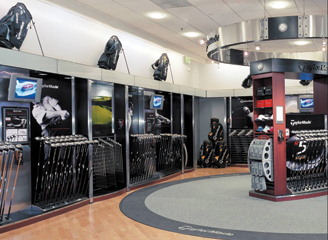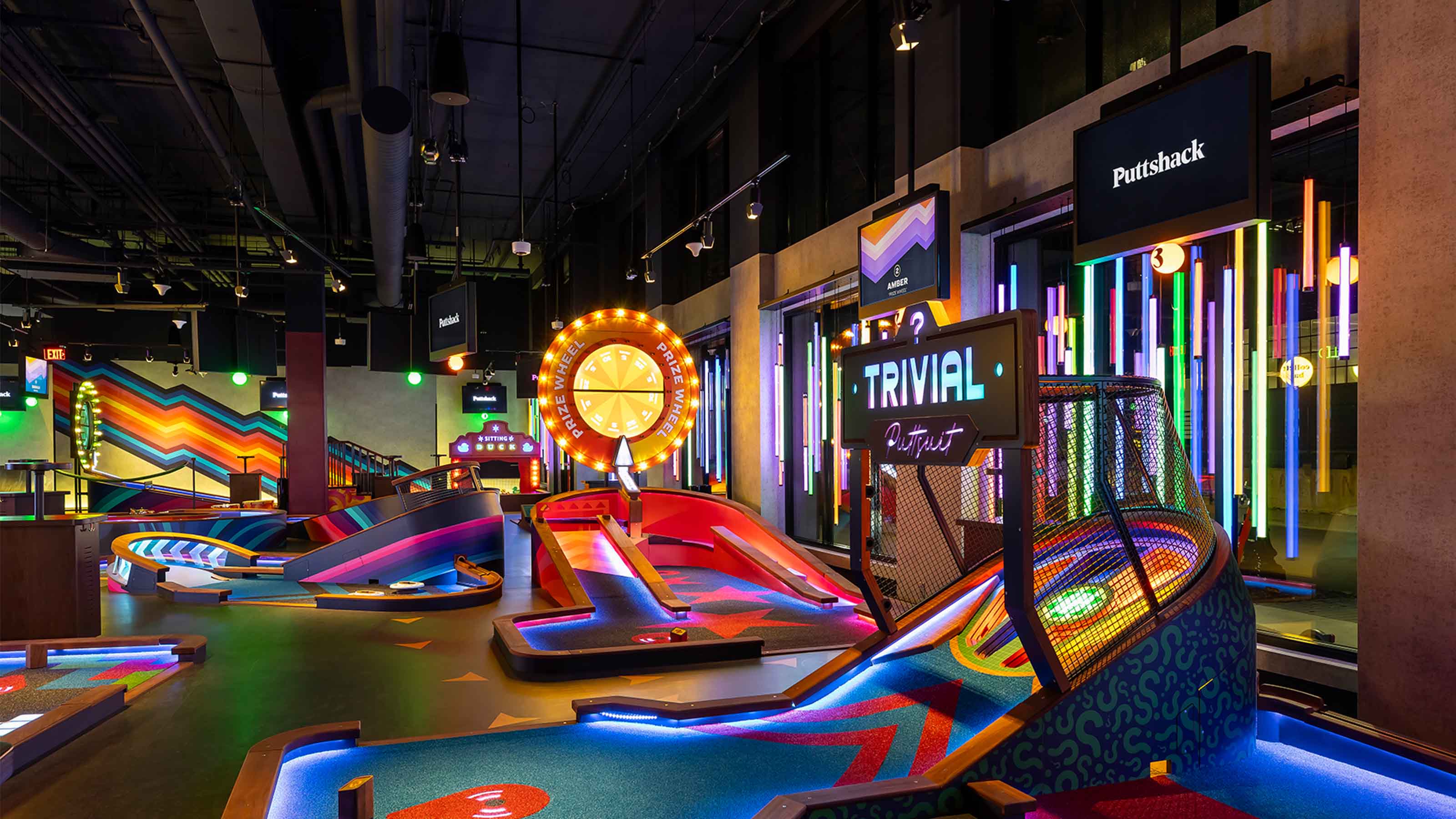Experimental Marketing

- With all of the creativity, craftsmanship of communication, and the visual style of high stakes advertising, today's commercials and advertisements are great examples of how to produce a really solid brand message. However, a void is frequently found in many great advertising campaigns. Some campaigns lack the most compelling piece just at the most pivotal point of communication-the point of sale. Some of the most amazingly creative campaigns focus solely on outward media, leaving unclosed the crucial last loop of brand communication, the message delivered and received at-retail.
For TaylorMade, displays were built to accommodate the unique design of the new clubs. Golf clubs are generally, loose and a little clumsy to handle. But the news displays brought order and a uniform, organized look.
Many advertising pundits are predicting that the end of traditional marketing methods is close at hand. Thirty second TV spots are being displaced by DVR and video on demand. Radio is going through its own upheaval with threats from the likes of the ipod and XM radio. Newspaper ads are being challenged by the internet and new wireless communications.
Agencies are following success. Marketing at-retail is their next big hit. Groups like WPP, The Store, MediaEdge CIA Retail Media Division, Omnicom and G2 have organized to deliver this rediscovered market. They are seeing the opportunity to utilize the retail store as a medium itself, and to extend the traditional mass media campaigns into the creation of brand experiences at-retail. This is experiential marketing.
Experiential marketing takes into account the cultural/anthropological human truth of relationships. Brands are defined by how they create relationships with customers. Those relationships are defined by the experiences shared by brand and consumers. Affinity in brand relationships can be correlated to the positive brand experiences a consumer has with the brand. Be it through events, promotions, advertising, shopping, post-purchase satisfaction, etc. it's all about creating Brand Experiences.
A PARADIGM SHIFT IN PERSPECTIVE
So why experiential marketing at retail? Is traditional media not sufficient for sharing experiences with customers? As media fragmentation and consumer savvy continue to rise, one element in the advertising realm that has remained intact, yet is often overlooked in terms of its communication value, is the retail store itself. The key to creating brand experiences in today's marketplace is looking at the retail store as more than a sales venue. It is an actual medium and consumer touchpoint, and must become more than just a point of distribution.
This paradigm shift requires the industry to look more deeply at advertising than just exposure and reach and frequency. Marketing atretail is more than just in-store TV ads, digital signage, and POP displays. The retail venue can become the primary location for disseminating powerful branded messages. It has potential to become the brand experience venue.
The goal of branding is to generate an emotional moment between a consumer and a brand. Marketing atretail can become the premier advertising opportunity to cement experiences with brands and their consumers because it is the place that consumers continue to come to and interact with. Brand experiences atretail are created by taking the essence of a brand and extending it into three-dimensional space, utilizing form and function to support the story the brand is trying to tell. This creates a custom touchpoint for a consumer experience. It is essentially creating an ad of the brand essence in 3-D form-don't call it a store, call it an ad with walls.
There is one essential truth at play here: physical human beings enjoy tangible, tactile, and real experiences. Experiential marketing is about the "Sensory Experience"-communicating to the senses and allowing for the retail theater of the mind to close the deal. This closes the last loop in the brand communication chain and ensures investment in mass media is not lost at point of sale.
A daily selection of features, industry news, and analysis for AV/IT professionals. Sign up below.
Ultimately, creating custom, brand experiences for the customer at the last and most crucial touchpoint is the goal of branding and advertising. Basically it is to generate an emotional moment between a consumer and the brand. Experiential marketing turns every touchpoint in the messaging process into a brand touchpoint, leaving an indelible impression and experience on the consumer, creating affinity, and increased likelihood for sales and customer loyalty.
To get the biggest bang for out of the media budget this relationship with the customer must extended to every touchpoint. It must be planned and all Touchpoints like Mass Media, PR, marketing at-retail and even events must be integrated into the marketing mix.
THE TAYLORMADE GOLF MODEL
Let's take a look at the success that TaylorMade Golf's experiential marketing program has enjoyed. In little over a year and a half, TaylorMade Golf seen been able to upsell many of its existing customer to their latest high end clubs, while being able to gain new customers and incremental sales.
The company's objective is to be the number one performance brand in golf by providing technically advanced products. If you want the best in golf, you have to have TaylorMade. Their plan included mass advertising and sponsorships of top PGA Tour players. But the real key to incremental business growth has been closing the last loop of brand communication, creating brand experiences with potential customers.
The company decided that every touchpoint of the consumer buying experience has to be branded with the same message, same feeling, same tone, same look and same experience— on the course, off the course, to the Tour players, at Tournaments, on the driving range or even at the company headquarters. Budget was re-directed from TV and print and directed to their Experiential marketing program.
In creating a 3D look, TaylorMade brought in materials to support the Performance brand concept. Polished metals supported a 21st century technology look that imitates the high performance engineering built-in to its clubs. They also created the idea of a store within a store. But since their products are carried in very diverse settings, different configurations had to be developed to accommodate anything from four foot wall units in small pro-shops to over 3,000 square foot showrooms and even store-in-store units at sporting good stores. The difference was amazing. The displays were built to accommodate the unique design of the new clubs. Golf clubs are generally, loose and a little clumsy to handle. But the news displays brought order and a uniform, organized look. This married well with the polished metal look.
When you walk into to one of these stores, you know where the TaylorMade products are. TaylorMade didn't stop there. They brought the TaylorMade experience and their products to every touchpoint. A custom fit cart was created to be brought out on to the golf course. Customers got the full experience while trying the clubs right on the links.
For tournaments, they created a custom made shop on wheels to fix and fit the Pros' clubs. This encouraged fans/customers to visit, see their favorite Pro and get the TaylorMade experience. They even made a special presentation case to sell to golf pros. The information left with the Pros further reinforced the premium position when they talked with their clients.
The integrated approach deployed by TaylorMade not only up sold their existing customers, but brought in incremental sales and new loyal, lifelong TaylorMade customers.
